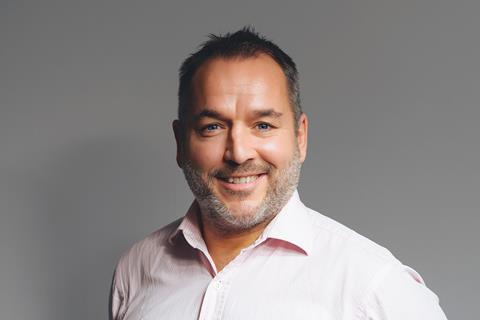When it comes to hanging up their PC after decades of grafting for clients, many lawyers are surprisingly ill-prepared. Maria Shahid looks at the dos and don’ts of ‘lexit’

'Becoming a law firm owner is no longer an attractive career option for many who wish to practise law without the risks of law firm ownership'
Viv Williams, Viv Williams Consulting
Aspirations in the legal profession are changing, and a growing number of smaller practices and sole partnerships in particular are facing a dilemma: what happens to the firm when a partner retires?
‘We have around 3,000 practices facing this dilemma; that’s a third of UK law firms,’ says Viv Williams, executive director at Viv Williams Consulting. ‘I have spoken to many partners who simply assumed that younger associates and salaried partners would aspire to become law firm owners, as they had 30 years ago. That’s simply not the case anymore. Becoming a law firm owner is no longer an attractive career option for many who wish to practise law without the risks and responsibilities of law firm ownership.’
‘Traditionally, in small to mid-size firms, equity partners would retire having been bought out by new, younger equity partners, who would have been waiting patiently in the wings to increase their share of the equity,’ notes Nigel Clark, chief executive of Nexa Law. ‘In more recent times, with more partner mobility and the next generation wanting different things from their careers, I think it’s got harder for solicitors to retire successfully. I’ve been stunned at how little planning small-firm partners do for retirement and exit, particularly recently.’
Finance and PII costs
With rising professional indemnity insurance (PII) premiums – as well as the obligation for run-off cover for six years under the Solicitors Indemnity Rules and Code of Conduct should the firm close – it is unsurprising that taking on the responsibility of running a small law firm is an unattractive option for many solicitors. ‘Professional indemnity for solicitors’ practices is one of the highest costs in running a law firm and carries significant risk if it goes wrong,’ says Williams.
The amount of leverage required to run a practice is also a huge risk. ‘The traditional bank finance of overdraft and term loan is becoming less of an option, with many firms needing secondary funding lines for VAT, PII and even practising certificates. The responsibility for this all falls on the law firm owner,’ notes Williams. Practising fees were up 10% for the year 2022-23, with an individual certificate now costing £286.
The rising cost of regulation is also a deterrent for younger solicitors wanting to own law firms, says Williams. In April this year, the Solicitors Regulation Authority warned that it would be looking to the profession for more funding. This comes after the budgets of the Legal Services Board (LSB) and the Legal Ombudsman (LeO) both increased, he explains.
'With more partner mobility and the next generation wanting different things from their careers, I think it’s got harder for solicitors to retire successfully. I’ve been stunned at how little planning small-firm partners do for retirement and exit, particularly recently'
Nigel Clark, Nexa Law
Is incorporation the answer?
Incorporation can help manage future risks by protecting the assets of the partner and their clients, notes Paul Bennett, a partner at Bennett Briegal and a founding member of the Association of Law Firm Merger Advisers, a group of specialists who advise law firms and private equity firms looking to acquire an interest in law firms.

‘It is just reckless to expose your estate and your clients by avoiding incorporation in this day and age. The only issue is LLP or limited company. You can form an LLP yourself as an individual, and a limited company jointly, so even a sole practitioner can easily do this without opting for a company.’
Williams agrees that when retirement options are being considered, becoming a limited company should be top of the agenda, for the simple reason that being a company director is likely to be more appealing to younger solicitors than becoming a partner in a traditional partnership with the obvious risks and liabilities that brings.
He acknowledges, however, that this is not a complete solution to the retirement dilemma. ‘I have numerous examples where two equity partners have incorporated their business on the assumption that the senior associates and salaried partners would wish to become directors in a limited company structure only to be informed that they want a job with a good salary, but do not want ownership.’
Lexit strategy: Leaving on your own terms
Plan ahead: Planning for retirement should start three to five years ahead of the target date for retirement.
Debt collection: Unbilled work in progress and uncollected debt should be dealt with first. Looking at these is the first step in due diligence for any buyer, and will also affect the buy-out price and prospects.
Incorporation: This can help manage future risks by protecting the assets of the partner and their clients.
In conversation: Don’t assume younger colleagues or junior partners will want to buy you out, through partnership or assuming directorships. You need to know if this is an aim for them.
Successor practice rule: Understand and plan around the professional indemnity insurance risk in terms of the successor practice rule and how this operates.
You without me: Ask yourself, if you were taken out of the practice, what value would be left?
Consider consolidators: There have been high-profile failures among law firm ‘consolidator’ businesses. But others have worked, keeping a low profile by operating a ‘house of brands’ model.
Trail end: American equity partners tend to be allowed to stay with the firm ‘forever’, or at least longer, so they can get trail income from their client relationships. There are impediments to this in England and Wales, but staying on as a consultant may be an option.
Prepare yourself: Start to take extra days off to build up your interests and activities. Done as one big step, retirement can be a shock after a busy life in law.
Open-market sale
While growing your own successor internally is the most obvious solution to partner retirement, Bennett encourages his clients to think about how attractive the firm is on the open market if that is not an option.
Clark agrees that selling a practice needs to be a serious option – whether to competitors, larger firms, younger partners or models such as Nexa Law.
A number of ‘consolidators’ have been acquiring smaller firms, either bringing them under a bigger brand or using a ‘house of brands’ model, which allows the acquired firms to keep trading under their identities. While some, such as the Metamorph Group, have proved to be high-profile failures, others have been more successful.
‘Being part of a bigger group definitely has its advantages,’ says Chris Marston, chief executive of Lawnet. ‘It provides more of a future for the firm and an opportunity to leave a successful business to someone who can take it further.’
With any sale, being realistic about the value attached to the practice is crucial, says Clark: ‘You have to answer the question: “Why would anyone pay me money for this practice?” If you can’t come up with several reasons, then you need to change tack and plan better.

‘You really have to be brutally honest with this,’ he warns. ‘I have seen lawyers’ egos often getting in the way. They think their practice or firm is worth loads, whereas in the real corporate world, it’s not at all. We’ve had this a few times with lawyers looking for exits from their firms.’
Preparing a firm for sale is essential, adds Williams. ‘Dealing with some fundamental issues such as WIP unbilled and outstanding debtors uncollected should be their first action. Any potential purchaser would look at these issues during the due diligence process.
‘Once a firm has been prepared for a potential sale, using a professional in the preparation of a teaser document can greatly assist in the process of finding a solution. Do not place the firm on a “list”, as everyone then knows the firm for sale is and obviously any value in the practice is diminished, as potential buyers think the firm is distressed in some way. This forces any value from the practice and potential purchasers to walk away,’ he adds.
‘The structure of any deal is critical,’ Bennett says. ‘Is it a sale of the assets (which can minimise the buyer’s risks, but cause the successor practice issues), or a sale of the whole entity? If the latter, selling a limited company is often more attractive to a buyer.
‘Tax will impact on the buyer and the seller’s preference, so experienced negotiation of the heads of terms often increases the chances of successfully getting to completion. All too often, we see the parties try and agree something privately and then realise they have a different version of the deal in mind. Short and clear heads of terms, including next steps – structure- and document-wise – make sense,’ he adds.
‘We encourage the parties to agree a realistic timeframe, often three to six months, for the deal to occur from heads of terms to completion,’ Bennett says. ‘Then consider the practical issues. What happens to storage of the old files? Data destruction? Have they considered the employment law implications including TUPE [Transfer of Undertakings (Protection of Employment)]? If acting for the selling party, we always encourage a buyer to agree an earn-out. It helps with the transition and gives both parties an interest in making the deal work. Anything from six months to multiple years as a consultant can work.’
Successor practice rule
'Run-off PI insurance must be in place for six years after the firm closes. This covers claims which are made in the future in relation to the time when the firm was practising'
Corinne Staves , CM Murray
If a practice is sold, the successor practice rule needs to be considered, warns Bennett. ‘Smaller firms need to know, understand and plan around the professional indemnity insurance risk in terms of the successor practice rule and how this operates. Each week I take a call from someone confronting this rule, when it is proving to be a barrier.’

It is far better to plan for it in advance through things like incorporation, sale price adjustment to cover the costs, or even using an earn-out provision to fund it.
‘Run-off PI insurance must be in place for six years after the firm closes. This covers claims which are made in the future in relation to the time when the firm was practising,’ notes Corinne Staves, a partner at CM Murray.
‘The costs of run-off cover are often considered to be eye-watering, especially when they come at a time when income stops and other closure-related costs are incurred. Many law firms therefore try to seek a partner to merge with or, usually, be acquired by, so that the acquirer firm can serve as a successor practice for PI purposes.
‘Depending on claims history, the increase in insurance costs for the acquiring firm as a successor practice is usually less than the cost of run-off cover. This should also be covered by the income to be generated by the business being acquired, but, again, that will depend on the specific circumstances and might not be true, for example if the retiring partner(s) wish to retire immediately and the goodwill and relationships are closely connected to them.’
Alternatives
Another option may be to ensure that the remuneration structure of your firm allows you to continue earning after you have stopped serving clients, says Clark, referencing a model more familiar to US lawyers.
‘American equity partners tend to be allowed to stay with the firm forever, or at least longer, so they can get trail income from their client relationships. The Brits haven’t been as successful at this. It certainly doesn’t fit easily in a lockstep remuneration structure,’ he explains.
One thing is clear: planning an exit needs to start at least five years in advance, if not more, to provide time for key relationships to be transitioned to other staff. ‘You have become detached from the practice. That requires trust to be built up in other people,’ says Sarah Chilton, a senior partner at CM Murray. ‘If you decide to sell, it will rely on the reputation and expertise of your firm not just residing with you anymore.’
Clark agrees that for firms without a succession plan, partners need to think about monetising their practice, ideally three to five years in advance, to give themselves an opportunity for an exit with some cash. That means they need to have worked out how the income stream will continue.
‘They need to say: “If I took myself out of this practice, the same value remains.” If they can do that, then they have a very good chance of making some money. It’s like retiring from professional sport: try and do it on your terms.’
Maria Shahid is a freelance journalist































2 Readers' comments